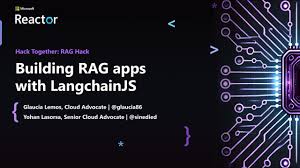NLP RAG stands for Natural Language Processing Retrieval Augmented Generation. This technology leverages the power of natural language processing to retrieve relevant information from vast datasets and then uses that information to generate human-quality text.
A White Paper on NLP RAG Applications
Understanding NLP RAG
NLP RAG stands for Natural Language Processing Retrieval Augmented Generation. This technology leverages the power of natural language processing to retrieve relevant information from vast datasets and then uses that information to generate human-quality text.
Key components of NLP RAG:
- Retrieval: Identifying relevant information from a corpus of documents using techniques like keyword matching, semantic search, or vector representations.
- Augmentation: Incorporating this retrieved information into the generation process by feeding it to the language model as context.
- Generation: Producing coherent and informative text using advanced language models like GPT-3 or BERT.
Why NLP RAG is Essential for Business Today
- Enhanced Customer Experience:
- Personalized recommendations: NLP RAG can analyze customer data to provide tailored product recommendations, increasing customer satisfaction and loyalty.
- Improved customer service: Chatbots and virtual assistants powered by NLP RAG can provide instant and accurate responses to customer inquiries, reducing wait times and improving overall customer experience.
- Targeted marketing campaigns: By understanding customer preferences and behavior, NLP RAG can help create highly relevant marketing campaigns that resonate with the target audience.
- Efficient Knowledge Management:
- Rapid access to relevant information: NLP RAG can quickly search through large databases and identify the most relevant information, saving time and effort for employees.
- Automated summarization: NLP RAG can automatically summarize complex documents, making it easier for employees to understand key points and extract relevant information.
- Knowledge graph creation: NLP RAG can help create knowledge graphs, which visualize relationships between concepts and facilitate better understanding of complex topics.
- Streamlined Business Processes:
- Automated document generation: NLP RAG can generate various types of documents, such as contracts, reports, and emails, based on predefined templates and data inputs.
- Intelligent data extraction: NLP RAG can extract structured data from unstructured sources like PDFs, emails, and web pages, automating data entry and analysis tasks.
- Improved decision-making: By providing data-driven insights and recommendations, NLP RAG can help businesses make more informed and effective decisions.
- Innovation and Competitive Advantage:
- Development of new products and services: NLP RAG can be used to develop innovative products and services, such as AI-powered customer support chatbots or personalized content generation tools.
- Increased efficiency and cost-effectiveness: By automating tasks and improving decision-making, NLP RAG can help businesses increase efficiency and reduce costs.
- Differentiation from competitors: Businesses that effectively leverage NLP RAG can gain a competitive advantage by offering superior products, services, and customer experiences.
Real-World Applications
- Healthcare:
- Medical document summarization: NLP RAG can summarize medical records and research papers, making it easier for healthcare professionals to stay informed.
- Drug discovery: NLP RAG can analyze vast amounts of medical literature to identify potential drug targets and accelerate drug development.
- Finance:
- Risk assessment: NLP RAG can analyze financial news and market data to assess risk and identify potential investment opportunities.
- Customer sentiment analysis: NLP RAG can analyze customer feedback to understand customer sentiment towards financial products and services.
- Marketing:
- Content generation: NLP RAG can generate personalized product descriptions, blog posts, and social media content, increasing engagement and conversions.
- Market research: NLP RAG can analyze customer reviews and social media conversations to gain insights into market trends and customer preferences.
Technical Considerations
- Data quality and quantity: The quality and quantity of the data used to train NLP RAG models are crucial for their performance.
- Model selection: Choosing the right NLP RAG model (e.g., GPT-3, BERT) depends on the specific task and available resources.
- Ethical considerations: NLP RAG can raise ethical concerns, such as bias in the data or the potential for misuse.
- Explainability: Understanding how NLP RAG models arrive at their conclusions is important for building trust and ensuring accountability.
Future Trends and Outlook
- Multimodal models: NLP RAG models are increasingly incorporating other modalities, such as images and audio, to enhance their capabilities.
- Explainable AI: Efforts are underway to develop more explainable NLP RAG models to improve transparency and accountability.
- Ethical AI: As NLP RAG becomes more prevalent, addressing ethical concerns related to bias, fairness, and privacy will be essential.
Reference
- Retrieval-Augmented Generation for Knowledge-Intensive Tasks by Lewis et al. (2020) - This paper provides a comprehensive overview of NLP RAG and its applications.
- IBM Research - https://research.ibm.com/blog/retrieval-augmented-generation-RAG
- IAS-RESEARCH - http://www.ias-research.com/typography/machine-learning/an-expanded-and-comprehensive-white-paper-about-nlp-rag-application-and-business-user-cases-create-a-reference-list-about-books-and-websites
- IAS- RESEARCH http://www.ias-research.com/typography/machine-learning
Additional Considerations:
- Data Quality: Ensure that the data used in rag applications is accurate, reliable, and up-to-date.
- Customization: Rag applications can be customized to meet the specific needs of different industries and businesses.
- Integration: Consider integrating rag applications with other business systems to streamline workflows and improve data accessibility.
By carefully considering these factors, businesses can effectively leverage rag applications to drive growth and success. Contact keencomputer.com for details.
